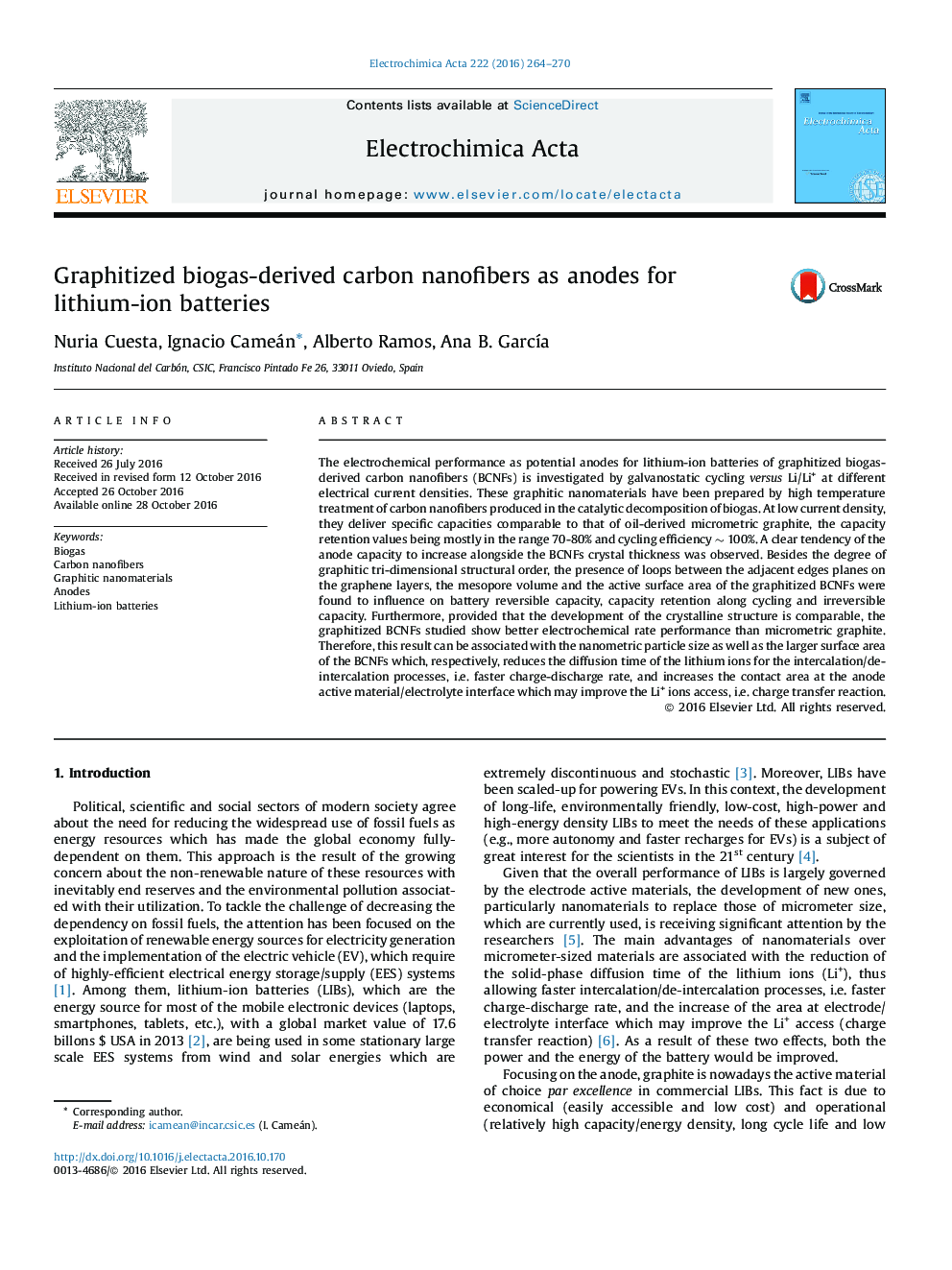| کد مقاله | کد نشریه | سال انتشار | مقاله انگلیسی | نسخه تمام متن |
|---|---|---|---|---|
| 6472546 | 1424135 | 2016 | 7 صفحه PDF | دانلود رایگان |
The electrochemical performance as potential anodes for lithium-ion batteries of graphitized biogas-derived carbon nanofibers (BCNFs) is investigated by galvanostatic cycling versus Li/Li+ at different electrical current densities. These graphitic nanomaterials have been prepared by high temperature treatment of carbon nanofibers produced in the catalytic decomposition of biogas. At low current density, they deliver specific capacities comparable to that of oil-derived micrometric graphite, the capacity retention values being mostly in the range 70-80% and cycling efficiency â¼ 100%. A clear tendency of the anode capacity to increase alongside the BCNFs crystal thickness was observed. Besides the degree of graphitic tri-dimensional structural order, the presence of loops between the adjacent edges planes on the graphene layers, the mesopore volume and the active surface area of the graphitized BCNFs were found to influence on battery reversible capacity, capacity retention along cycling and irreversible capacity. Furthermore, provided that the development of the crystalline structure is comparable, the graphitized BCNFs studied show better electrochemical rate performance than micrometric graphite. Therefore, this result can be associated with the nanometric particle size as well as the larger surface area of the BCNFs which, respectively, reduces the diffusion time of the lithium ions for the intercalation/de-intercalation processes, i.e. faster charge-discharge rate, and increases the contact area at the anode active material/electrolyte interface which may improve the Li+ ions access, i.e. charge transfer reaction.
Journal: Electrochimica Acta - Volume 222, 20 December 2016, Pages 264-270
